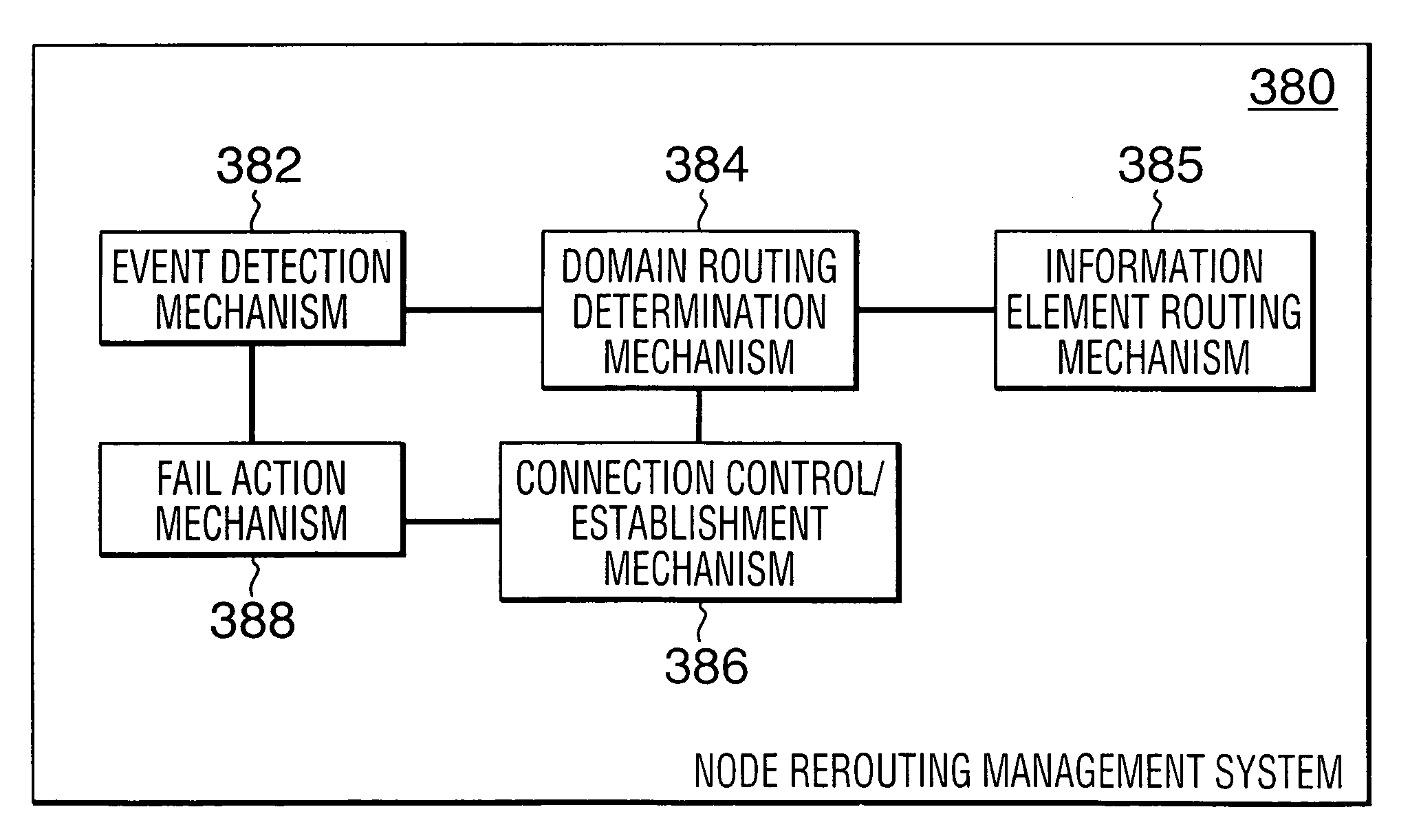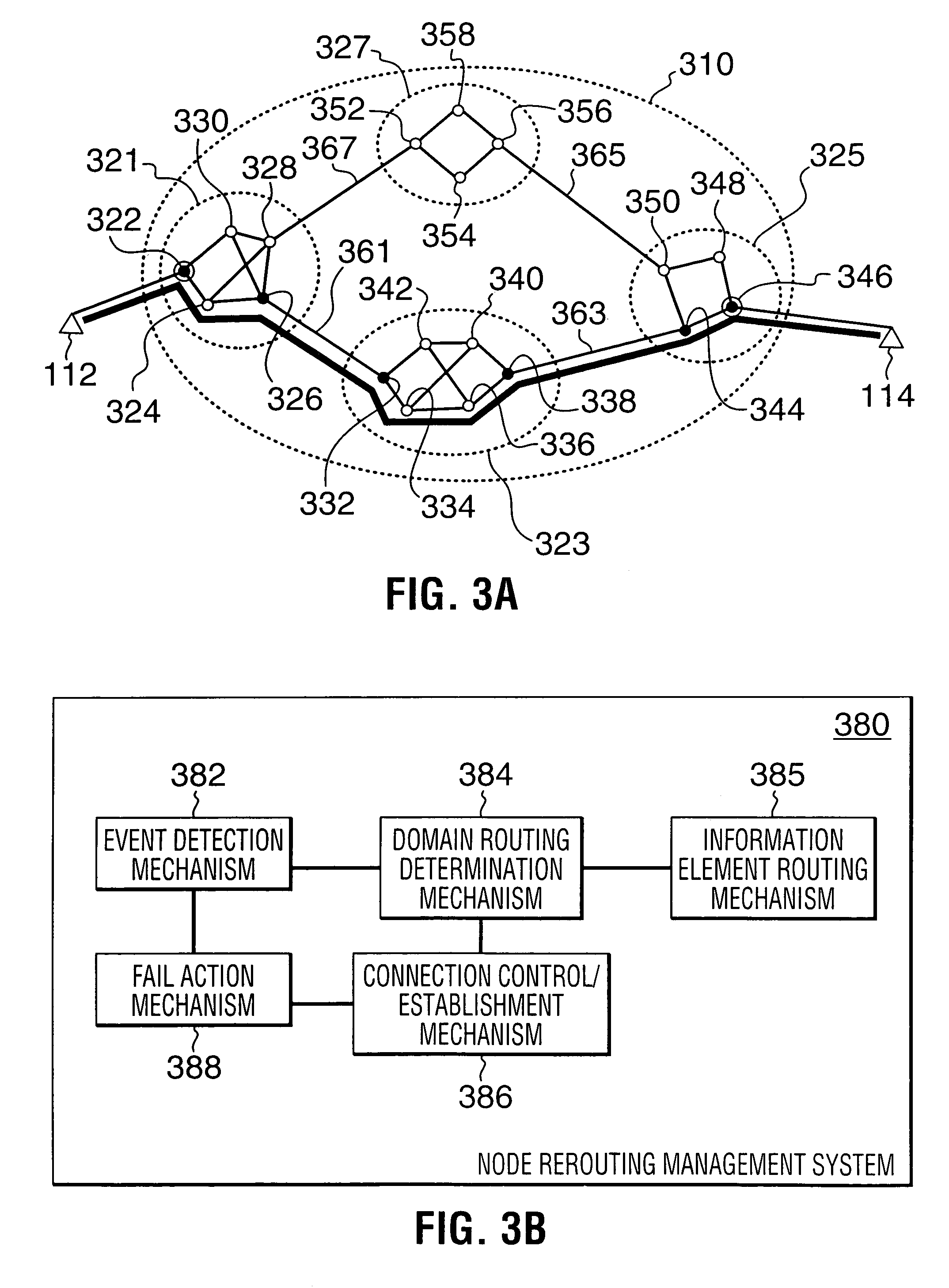Rerouting in connection-oriented communication networks and communication systems
a communication network and communication system technology, applied in data switching networks, frequency-division multiplexes, instruments, etc., can solve problems such as affecting connection recovery and end user disconnections
- Summary
- Abstract
- Description
- Claims
- Application Information
AI Technical Summary
Problems solved by technology
Method used
Image
Examples
Embodiment Construction
I. Edge-Based Rerouting (EBR)
[0025]FIG. 1 illustrates an example of a known Edge-Based Rerouting (EBR) implementation based on a known ATM Forum EBR specification. In FIG. 1, an EBR rerouting domain 110 encompasses the PNNI network including multiple ATM communication nodes. The multiple nodes are defined inside the boundary of the rerouting domain 110, so as that the EBR protocol allows call recovery and path optimization inside the boundary. The nodes are interconnected by respective routing links. For example, each link is basically a communication channel or circuit which defines a topological relationship between two nodes connected thereby. A source customer premise equipment (CPE) 112 originates a call connection with the network at an edge node 116 (“originator”) to another edge node 118 (“terminator”) to establish a call path to a destination CPE 114 through other edge nodes (e.g., nodes 120 and 122).
[0026]Each of the nodes includes a connection admission control (CAC) comp...
PUM
 Login to View More
Login to View More Abstract
Description
Claims
Application Information
 Login to View More
Login to View More - R&D
- Intellectual Property
- Life Sciences
- Materials
- Tech Scout
- Unparalleled Data Quality
- Higher Quality Content
- 60% Fewer Hallucinations
Browse by: Latest US Patents, China's latest patents, Technical Efficacy Thesaurus, Application Domain, Technology Topic, Popular Technical Reports.
© 2025 PatSnap. All rights reserved.Legal|Privacy policy|Modern Slavery Act Transparency Statement|Sitemap|About US| Contact US: help@patsnap.com



